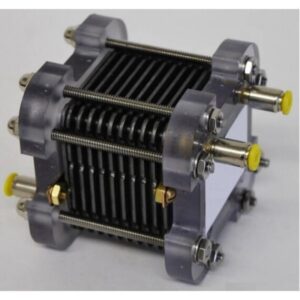
The fuel cell market has been growing steadily over the past few years owing to increasing demand for cleaner and more sustainable sources of energy. Fuel cells utilize an electrochemical reaction involving hydrogen to generate electricity with water and heat being the only byproducts. Compared to combustion engines, fuel cells are more efficient and have the potential to significantly reduce emissions of greenhouse gases. The major application areas of fuel cells include stationary power generation, portable power, and transportation among others.
Global fuel cell market is estimated to be valued at US$ 3,563.33 Bn in 2024 and is expected to exhibit a CAGR of 12.% over the forecast period 2024 to 2031. Fuel cells find widespread adoption in various industries due to their modular design, high reliability, and near-zero emissions. Growing awareness about the environmental impact of fossil fuels has prompted many commercial establishments and residential users to adopt fuel cell technology for backup power generation. Furthermore, governments across nations are promoting the use of fuel cells in public transportation systems to enable a transition towards greener mobility solutions.
Key Takeaways
Key players operating in the fuel cell market are Fuel Cell Energy Inc., Cummins Inc., Ballard Power Systems Inc., Plug Power Inc., SFC Energy AG, Horizon Fuel Cell Technologies Pte Ltd., Mitsubishi Hitachi Power Systems Ltd., Toshiba Energy Systems & Solutions Corporation, Intelligent Energy Limited and Nuvera Fuel Cells LLC. These companies are focusing on developing more efficient fuel cell systems and lowering production costs to make the technology accessible for mass market applications.
The key opportunities in the global fuel cell market include rise in investments for establishing hydrogen refueling infrastructure and increasing collaborations between fuel cell manufacturers and end-use industries. Furthermore, governments across countries are introducing favorable policies and incentives to encourage commercialization of fuel cells.
On the global expansion front, companies are actively exploring opportunities in fast growing markets across Asia Pacific and Middle East regions. Many Asian countries have outlined ambitious targets for clean energy and fuel cell adoption which is attracting investments from international fuel cell system providers.
Market Drivers
Stringent emission norms introduced by regulatory bodies globally: Tightening emission regulations particularly in developed regions has prompted industries and automakers to incorporate low-emission fuel cell technologies to reduce their carbon footprint. This is a key driver for the market.
Government initiatives promoting hydrogen economy: Favorable policies promoting research & development as well as deployment of hydrogen technologies across end-use applications like automotive, stationary and portable power sectors are boosting the adoption of fuel cells. Many governments offer subsidies and tax incentives for fuel cell products and infrastructure projects.
Market Restraints
High cost of fuel cell systems compared to conventional technologies: Despite technological advancements, fuel cells are still far more expensive than conventional fossil fuel-based power generation options making them less competitive. Significant cost reductions are required to achieve economies of scale.
Lack of hydrogen refueling infrastructure: Absence of widespread distribution network for hydrogen fuel is a bottleneck for widespread commercialization of fuel cell vehicles and equipment. coordinated efforts are required between industry and governments to build necessary infrastructure.
Segment Analysis
Fuel Cell Market is mainly classified into four segments namely, Proton Exchange Membrane Fuel Cell (PEMFC), Phosphoric Acid Fuel Cell (PAFC), Solid Oxide Fuel Cell (SOFC) and Molten Carbonate Fuel Cell (MCFC). PEMFC dominates the market holding around 50% share in 2024. Its increasing usage for portable power generation applications like laptops, mobile chargers etc. and transportation such as automobiles is driving the segment. PAFC comes second with around 25% share as it is ideal for stationary power plants owing to its ability to use non-purified hydrogen and carbon monoxide tolerant anode. However, SOFC is emerging fastest growing segment growing at around 15% CAGR owing to its high efficiency, long lifespan and capability to operate on hydrocarbon fuels. Its adaption is increasing for stationary and transport power applications.
Global Analysis
On regional analysis, Asia Pacific dominates the global fuel cell market with more than 35% share in 2024 led by countries like Japan, South Korea and China. This is attributed to increasing government initiatives and investments towards commercialization of fuel cells across transportation, stationary and portable power industries. Europe is the second largest market growing at around 10-12% owing to strong presence of manufacturers and support for development of hydrogen infrastructure in countries like Germany and France. However, North America is anticipated to be the fastest growing region growing at over 15% CAGR driven by increasing funding for research activities and roll out of fuel cell vehicles by leading automobile manufacturers in the US.
*Note:
- Source: Coherent Market Insights, Public sources, Desk research
- We have leveraged AI tools to mine information and compile it
